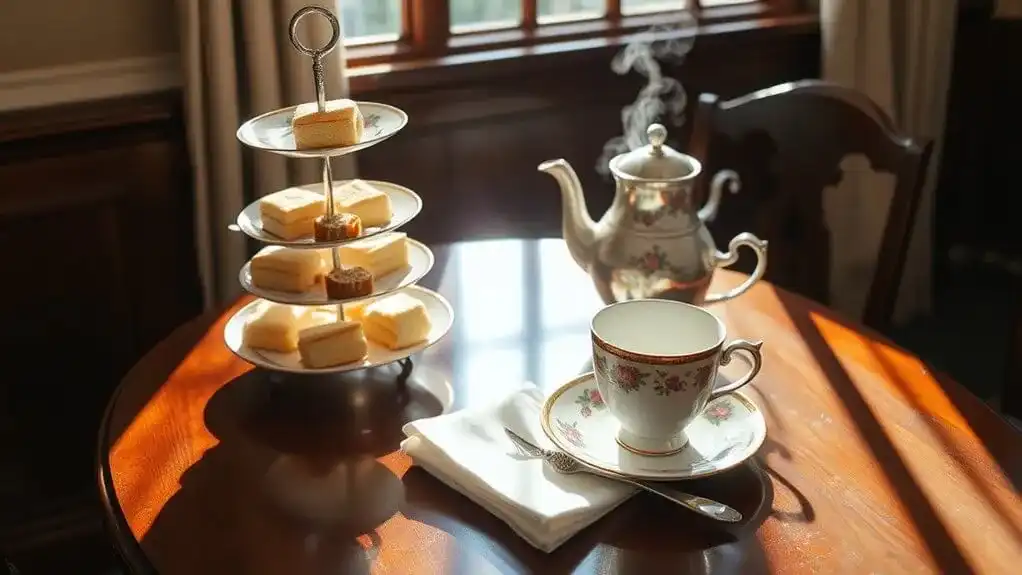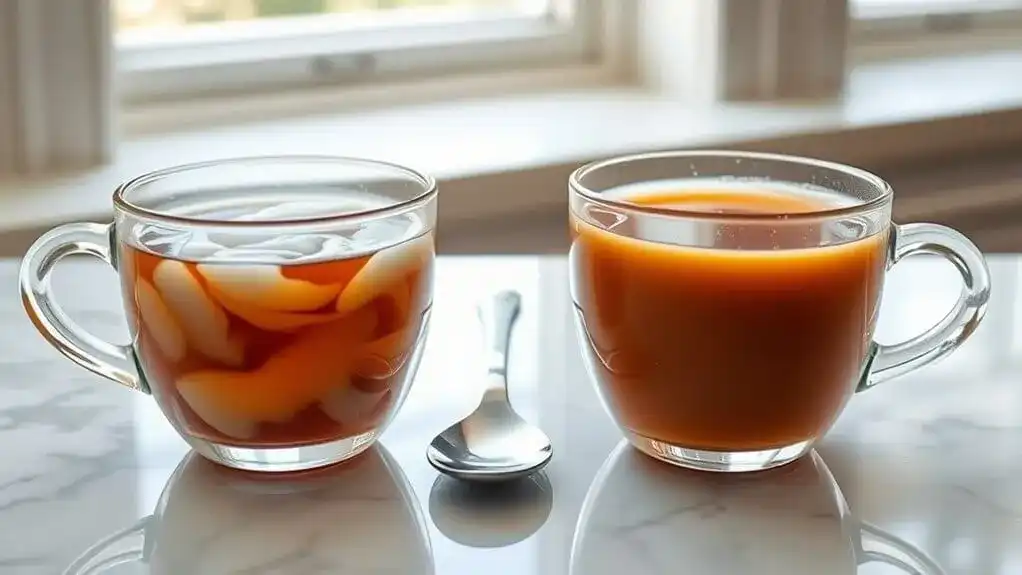Britain's beloved afternoon tea tradition emerged from a practical solution in the 1840s. Anna, the seventh Duchess of Bedford, couldn't bear the long wait between lunch and dinner, so she requested tea and light snacks around 4 o'clock. What started as her personal remedy quickly evolved into a fashionable social ritual when she began inviting friends to join her. The custom spread through aristocratic circles, establishing itself as an enduring symbol of British refinement that continues to enchant and evolve.
Key Points
- Anna, Duchess of Bedford, established afternoon tea in the 1840s to combat hunger between lunch and late dinner times.
- The tradition originated as a private meal but evolved into a social gathering when the Duchess invited friends.
- Tea's association with British aristocracy began in the 1660s through Charles II and Catherine de Braganza's influence.
- The custom spread from royal courts to aristocratic homes, becoming a fashionable social event by the 1880s.
- Formal afternoon tea included specific elements like fine china, tiered serving plates, and carefully selected accompaniments.
The Duchess Who Started It All: A Hunger-Driven Innovation

While modern Brits might take their afternoon tea ritual for granted, they owe this cherished tradition to Anna, the seventh Duchess of Bedford, who couldn't bear the long wait between lunch and dinner in the 1840s. The Duchess's hunger innovation came from a pressing social necessity, as urbanization and gas lighting had pushed dinner times as late as 9 pm for the wealthy classes.
Experiencing an uncomfortable "sinking feeling" around 5 pm, the Duchess devised a simple solution: she requested tea, bread, butter, and cake to tide her over. What began as a private remedy for hunger soon transformed into a fashionable social occasion when she started inviting friends to join her. The gatherings became particularly important for women, who found less restrictive clothing made these informal tea sessions more comfortable. This practical solution to the Duchess's afternoon hunger pangs ultimately evolved into one of Britain's most enduring cultural traditions. Much like modern food innovators who focus on customer-led innovation, the Duchess created a solution that perfectly met the needs of her social circle. Following the example set by Catharine of Braganza, who first popularized tea drinking among the English nobility in the 1660s, the tradition quickly gained widespread acceptance among the upper classes.
From Royal Courts to Drawing Rooms: Tea's Social Journey
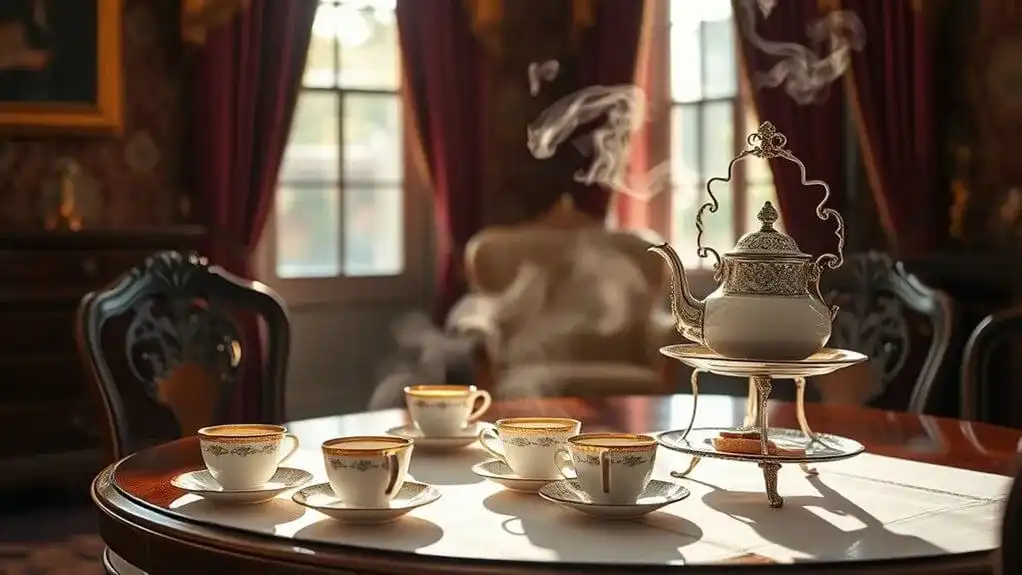
Long before the Duchess of Bedford's afternoon innovation, tea had already established itself as a symbol of refinement in British society. It began in the 1660s when Charles II and his Portuguese wife Catherine de Braganza introduced the beverage to England's royal court. Their influence quickly made tea drinking a mark of sophistication among the elite. The tradition began when the Duchess experienced hunger between meals and requested refreshments to tide her over.
As tea etiquette evolved, the practice spread from royal circles to the drawing rooms of aristocrats and wealthy merchants. These gatherings became essential platforms for social bonding, where guests would meet between 3:30 and 5 pm to share conversation over fine china teacups. The most fashionable households served their tea with savory finger sandwiches. By the 1880s, afternoon tea had become a fashionable social event among upper-class women. The tradition soon expanded beyond private homes, with prestigious hotels like Claridges and the Ritz offering elegant tea services. This transformation from exclusive royal custom to broader social ritual helped cement tea's place in British cultural identity.
Building the Perfect Tea Tray: Elements of Tradition
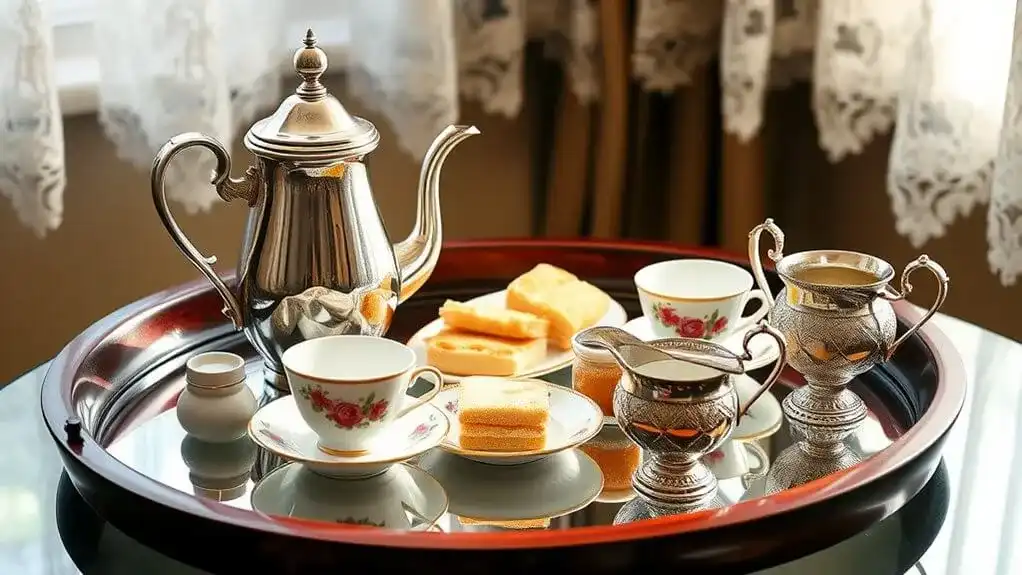
Three essential elements form the foundation of a traditional English tea tray: fine bone china, elegant serving pieces, and carefully chosen accompaniments. Tea etiquette demands that the teapot takes center stage, accompanied by matching cups, saucers, and a delicate milk jug. A proper tray presentation isn't complete without a sugar bowl and tea strainer for loose leaves. Fresh flowers in a low vase complement the setting and create a refined atmosphere.
The arrangement extends beyond these basics to create a fuller experience. A tiered serving plate displays an array of treats, from cucumber sandwiches to fresh scones with clotted cream. On every well-planned tea table, guests can expect two cake varieties, typically pairing a simple pound cake with an ornate option. Small dishes hold various condiments, while sugar tongs add refinement to the service. The entire setup rests on a pristine white tablecloth, often adorned with lace doilies, transforming an ordinary afternoon into an elegant social occasion. The tradition of placing the serving table separate from the guest table ensures proper tea service while maintaining the ceremonial atmosphere.
A Time-Honored Ritual for Modern Times
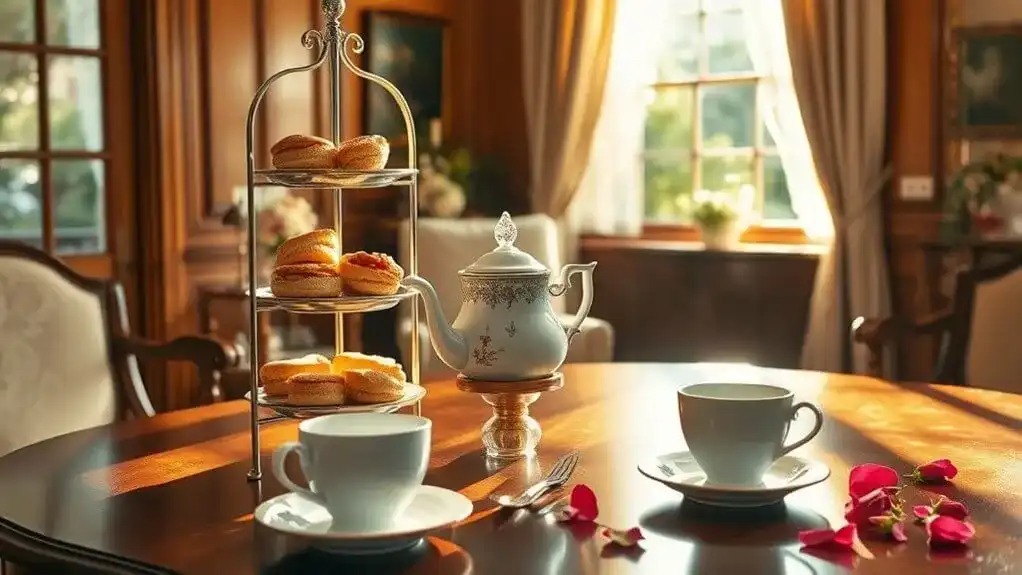
Although afternoon tea began as a simple meal between lunch and dinner, today's ritual has transformed into a sophisticated celebration of both tradition and innovation. The cultural significance of afternoon tea has evolved far beyond its origins, now embracing modern trends while honoring its classical roots. Luxury hotels and restaurants are crafting themed experiences, incorporating global flavors, and catering to diverse dietary preferences. Young professionals are leading the charge in preserving this tradition, with over one-fifth enjoying it monthly. The Duchess of Bedford introduced this cherished tradition to combat her afternoon hunger pangs.
The tradition's adaptability is evident in its contemporary incarnations. From champagne-enhanced gatherings to wellness-focused menus, afternoon tea has become a versatile social occasion. Online platforms have democratized access, allowing small businesses to offer creative interpretations, while high-end establishments continue to elevate the experience with seasonal menus and branded collaborations. This beloved ritual proves that even centuries-old traditions can thrive in today's fast-paced world. Much like the traditions depicted in Pride and Prejudice, where tea at Rosings Park exemplifies social etiquette, modern afternoon tea continues to serve as a marker of civility and refinement.
Conclusion
What began as a duchess's attempt to avoid "hangry" moments between meals has evolved into one of Britain's most cherished traditions. Today's afternoon tea continues to offer a welcome pause in our hectic digital age, where friends and family can unplug, connect, and savor both delicate treats and conversation. Whether served in posh hotels or cozy cottages, this ritual remains a distinctly British way to recharge one's social batteries.
